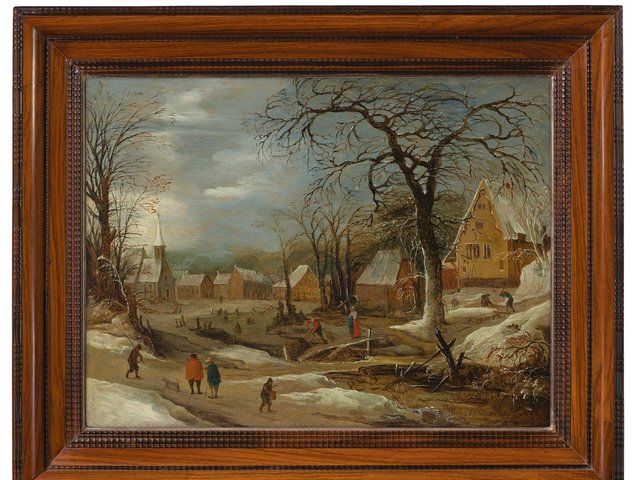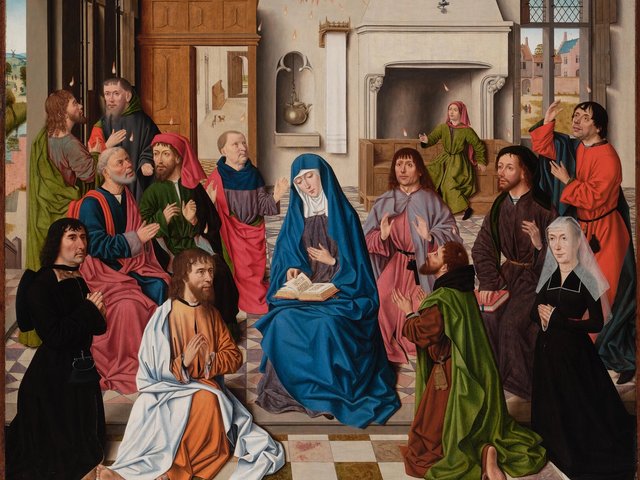London
“A new golden age” is how the Economist described Spain in 2000. Indeed, the Spanish economy has been one of the stronger in Europe: on average, GDP has grown by 3.5% since 1998.
Along with the strong economy, the market for Spanish art has been booming, with new records being set across the board. Recent auctions and sales to museums have confirmed the rise in prices for Spanish painters, from Old Masters, through the 19th century, to contemporary stars such as Miguel Barceló.
At the end of last year, Christie’s Old Master sale in London set a new world record for Luis Meléndez at £1.25 million ($1.95 million), almost double the pre-sale estimate. That record was bettered just a month later in New York, when the 18th-century artist’s “Still life with berries, apples and loaf of bread” sold for $4,039,500. In fact, the same price had probably already been achieved two years earlier when the National Gallery of Washington bought “Still life with figs and bread” from the London dealer Derek Johns. At the same time, the artist is enjoying institutional backing at the very highest level: the Prado has an exhibition of Meléndez’s work until 16 May.
“The slightly ascetic quality of Spanish art, its stark simplicity, strikes a chord with collectors,” says Alex Bell, head of Old Master paintings at Sotheby’s. “It is in tune with today’s sensibility.”
For 19th-century art, the auction field is dominated by Sotheby’s. Here the biggest name is Sorolla, the “Spanish impressionist,” and Sotheby’s set a new world record of £3.3 million in November last year at its Spanish sale for “Bathing time.” That sale totalled over £7 million, the highest ever for a Spanish auction, and produced a raft of new records including £520,000 for the Catalan painter Anglada-Camarasa. “Spanish art has been rather overlooked until recently,” says Mark Poltimore of Sotheby’s, “Collectors are realising that they can get a major work for much less than the best known names in the 19th-century market. And the strong, bold colouring is very much in the modern taste.”
The contemporary market is also strong, and Barceló in particular has now gone beyond the $1 million barrier, with a new record of £941,650 set at Sotheby’s London in June 2002.
What is pushing this market? With the stronger economy, Spanish buyers have more spending power. With the increasing interest in Spanish art, they are having to compete with American buyers from both continents and Europeans who are also forces in the market, particularly for Spanish still lifes and Sorolla.
In Spain itself, there is a small group of very wealthy, committed private collectors (above left), who have been joined in the last 10 years by some newer wealthy buyers, whose money mainly comes from business. These collectors are discreet and not very well known, as they buy anonymously, and do not lend their works: “We’d all love to know who they are!” says the Spanish art consultant Edmund Peel.
A characteristic of Spanish collectors is the catholicism of their taste. Almost all the well-known players collect right across the board, from Old Masters right up to contemporary works, and do not just buy work by Spanish painters. The same private collector who bought the Meléndez at Christie’s in December also bought “The Calla de Alcala, Madrid”, by the Italian painter of vedute, Joli, paying £1 million, three times estimate.
Another important factor is the liberalisation of exports. Up until about 10 years ago, it was very difficult to export Spanish works, which hampered market expansion. Richard de Willermin of Alcalá Subastas explains, “It is very much easier to obtain an export licence now. Even so, there are some obstacles: the foreign buyer of a picture, even if it has been declared exportable, has to reapply for an export licence after the sale. And the State can preempt.” This happened to Alcalá last June, when the State declared two recently rediscovered Goyas, “Tobias and the angel” and a Holy Family, unexportable. They were sold for E1.75 million each (The Art Newspaper, No.137, June 2003, p.39); both were preempted by the State.
An unexportable work invariably loses value, which is one reason why most major Spanish buyers prefer to buy outside Spain. A work bought outside the country can be reexported at any time (the owner just has renew the licence every 10 years).
As for museums, they benefit from the Spanish system of dation, under which a company gets a tax break for buying art for a museum. The system has been extended beyond death duties, and can be used to pay corporation tax and personal income tax. In 2002 the State accepted in lieu of tax a sketch for the tapestry cartoon “Flight outside the New Inn” by Goya in a deal with the Caja Madrid bank.
The Prado also has a private sponsorship arrangement with the Winterthur insurance company which can help on occasions. However it was State funding that enabled the purchase of Velázquez’s “Pope’s barber” last year for E23 million. In 2000, the Prado spent E24 million on Goya’s “Countess of Chinchón”, from the Ruspoli collection, with help from a Madrid bank.
Capitalising on the current strength of the market for Spanish art, both major auction houses are holding specialised sales. Christie’s has just announced that it will hold its first auction in Spain since 1999. It is scheduled for 6 October and will specifically include works that cannot be exported, such as a pair of still lifes of fruit by Juan van der Hamen y Léon, estimated at E800,000/1.2 million each.
As well as its regular November Spanish sale, Sotheby’s is preparing to auction a group of Spanish Old Masters, which will be held in London in December, although at the time of writing no more details were available.
Major collectors
Juan Abelló Banking, pharmaceuticals. Reputedly one of the richest men in Spain, collects widely from Old Masters to modern art, with works by Bacon, Matisse and Modigliani and many others.
Placido Arango Retailing and a chain of restaurant/shops. Collects across the board, from Old Masters to contemporary art.
Alicia Koplowitz Construction. Of the two sisters, Alicia is the richer (according to Forbes magazine she is worth $1.3 million) and her collection is generally considered to be better than Ester’s.
Ester Koplowitz Construction. Worth $1.1 billion, according to Forbes Magazine. Collects from Old Masters to Spanish modernists. Last year burglars stole works worth a reported £20 million from her Madrid home, including Goya’s “Donkey’s fall” and “The swing” which were her husband’s (from whom she is divorced). Most have now been recovered.
José Luis Varez Fisa Financial. Collects works of art. His antiquities collection was recently acquired by the Spanish State and is now in the Archeology Museum in Madrid He also collects Spanish works of art and Hispano-Islamic art
Juan and Carlos March Industrial and banking. The brothers, worth $1.7 billion according to Forbes magazine, are major but extremely private collectors with works from Bronzino to Chardin and right up to contemporary. The other branch of the March family, the heirs to Bartolomé March, have been selling part of the collections through Christie’s.
Rosendo Naseiro Industrial. Has the most important collection of Spanish still lifes in the world.
Baroness Thyssen Inheritance. Carmen (Tita), the widow of Baron Thyssen, has her own collection spanning the late 18th to mid 20th centuries. This will be shown a new wing of the Thyssen museum in Madrid, opening shortly.
Pedro Serra Most of the works of Modern and contemporary art which are on view at the recently opened “Es baluard” museum in Mallorca were donated by this local media mogul from his collection.
Originally appeared in The Art Newspaper as '¡Viva España! Market comes of age'



